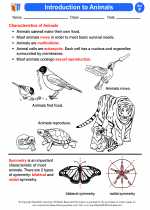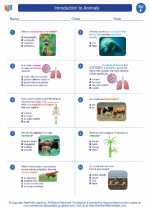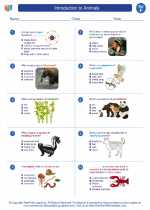Endoplasmic Reticulum
The endoplasmic reticulum (ER) is a network of membranous tubules and sacs that extends throughout the cytoplasm of eukaryotic cells. It plays a crucial role in the synthesis, folding, modification, and transport of proteins and lipids.
Types of Endoplasmic Reticulum
There are two types of endoplasmic reticulum: rough endoplasmic reticulum (RER) and smooth endoplasmic reticulum (SER).
Rough Endoplasmic Reticulum (RER)
- The RER is studded with ribosomes on its outer surface, giving it a "rough" appearance under a microscope.
- It is involved in the synthesis of proteins that are either secreted from the cell, inserted into the cell membrane, or transported to an organelle.
- These proteins are synthesized on the ribosomes and then enter the lumen of the RER for further processing.
Smooth Endoplasmic Reticulum (SER)
- The SER lacks ribosomes on its surface, giving it a "smooth" appearance.
- It is involved in lipid synthesis, metabolism of carbohydrates, detoxification of drugs and poisons, and storage of calcium ions.
- Additionally, the SER plays a role in the synthesis of steroid hormones in endocrine cells.
Functions of Endoplasmic Reticulum
The endoplasmic reticulum performs several important functions in the cell:
- Protein Synthesis: The RER is involved in the synthesis of proteins, while the SER is involved in lipid synthesis.
- Protein Folding and Modification: The ER provides an environment for newly synthesized proteins to fold properly and undergo post-translational modifications, such as glycosylation and disulfide bond formation.
- Calcium Homeostasis: The SER regulates the concentration of calcium ions in the cytoplasm, which is important for various cellular processes, including muscle contraction and cell signaling.
- Detoxification: The SER helps detoxify harmful substances, such as drugs and alcohol, by breaking them down into less toxic compounds.
Study Guide
Here are some key points to remember about the endoplasmic reticulum:
- Identify the differences between rough and smooth endoplasmic reticulum in terms of structure and function.
- Understand the role of the endoplasmic reticulum in protein synthesis and lipid metabolism.
- Explain the significance of the endoplasmic reticulum in maintaining calcium homeostasis and detoxification processes in the cell.
- Discuss the relationship between the endoplasmic reticulum and other organelles, such as the Golgi apparatus and the nucleus, in the process of protein trafficking and secretion.
It is also important to be familiar with the various diseases and conditions associated with endoplasmic reticulum dysfunction, such as diabetes mellitus and certain genetic disorders.
Remember to review and understand the structure, function, and significance of the endoplasmic reticulum to gain a comprehensive understanding of its role in cellular physiology.
.◂Science Worksheets and Study Guides Sixth Grade. Introduction to Animals

 Activity Lesson
Activity Lesson
 Worksheet/Answer key
Worksheet/Answer key
 Worksheet/Answer key
Worksheet/Answer key
 Worksheet/Answer key
Worksheet/Answer key
 Vocabulary/Answer key
Vocabulary/Answer key
 Vocabulary/Answer key
Vocabulary/Answer key
 Vocabulary/Answer key
Vocabulary/Answer key
 Vocabulary/Answer key
Vocabulary/Answer key
